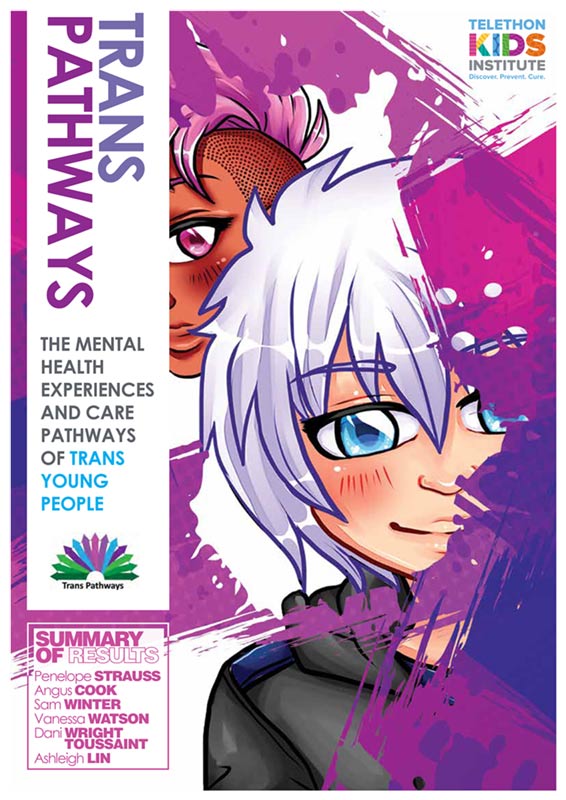Search

News & Events
Trans young people at high risk of depression and suicideTrans Pathways is the largest ever survey conducted into the mental health of trans young people in Australia.

News & Events
Project helps Ethan belongEthan recently took part in Belong, a study led by The Kids which aims to ensure deaf and hard of hearing kids have a happy & positive school experience
Research
Eating and exercise experiences of Australian trans and gender diverse folks: lived experience and stakeholder perspectivesTrans individuals face elevated health risks and socio-environmental challenges, influencing their engagement in health-protective behaviors (e.g. exercise and nutrition). Despite these challenges, there is a significant gap in understanding the specific eating and exercise experiences of Australian trans adults, including barriers to healthy behaviors and healthcare experiences. This study aims to address this gap by exploring these experiences, informing targeted interventions and healthcare practices to improve health outcomes.
Research
Contextualising Experiences of Co-Occurring Mental Ill-Health and Substance Use Among Trans, Non-Binary, and Gender Diverse Young People: Implications for Tailored Harm Reduction ApproachesThough significant research highlights higher rates of mental ill-health and substance use among trans, non-binary and gender diverse (henceforth 'trans') young people, little research has considered patterns, contextual characteristics, and correlates of co-occurring experiences of mental ill-health and substance use among trans young people.
Research
Reach and perceived effectiveness of a community-led active outreach postvention intervention for people bereaved by suicidePostvention is a core component of suicide prevention strategies, internationally. However, the types of supports provided to people impacted by suicide vary widely. This study examines the perceived effectiveness of the Primary Care Navigator (PCN) model for people bereaved by suicide. The PCN model was implemented in response to a suicide cluster.
Research
Rural workforce challenges: Why not rural psychiatry?The Australian psychiatry workforce is under-subscribed and highly urbanised. Currently, 90% of psychiatrists work in the cities, and there are significant projected workforce shortages of psychiatrists throughout Australia, particularly in rural and remote locations.
Research
Resilience and Posttraumatic Growth after Burn: A Review of Barriers, Enablers, and Interventions to Improve Psychological RecoveryBurn injuries are traumatic experiences that can detrimentally impact an individual’s psychological and emotional wellbeing. Despite this, some survivors adapt to psychosocial challenges better than others despite similar characteristics relating to the burn.
Research
Working with young people at risk of suicidal behaviour and self-harm: A qualitative study of australian general practitioners’ perspectivesGeneral Practitioners (GPs) play a crucial role in the identification and support of young people at risk of suicidal behaviour and self-harm; however, no studies have explored GPs’ perspectives, approaches, challenges, and resource needs when working with this cohort in an Australian setting.
Research
Investigation of structural brain correlates of neurological soft signs in individuals at ultra-high risk for psychosisIncreased severity of neurological soft signs (NSS) in schizophrenia have been associated with abnormal brain morphology in cerebello-thalamo-cortical structures, but it is unclear whether similar structures underlie NSS prior to the onset of psychosis. The present study investigated the relationship between severity of NSS and grey matter volume in individuals at ultra-high risk for psychosis stratified for later conversion to psychosis.
Research
Joint developmental trajectories of internalizing and externalizing problems from mid-childhood to late adolescence and childhood risk factors: Findings from a prospective pre-birth cohortThere is limited evidence on heterogenous co-developmental trajectories of internalizing and externalizing problems from childhood to adolescence and predictors of these joint trajectories. We utilized longitudinal data from Raine Study participants to identify these joint trajectories from 5 to 17 years using parallel-process latent class growth analysis and analyze childhood individual and family risk factors predicting these joint trajectories using multinomial logistic regression.
